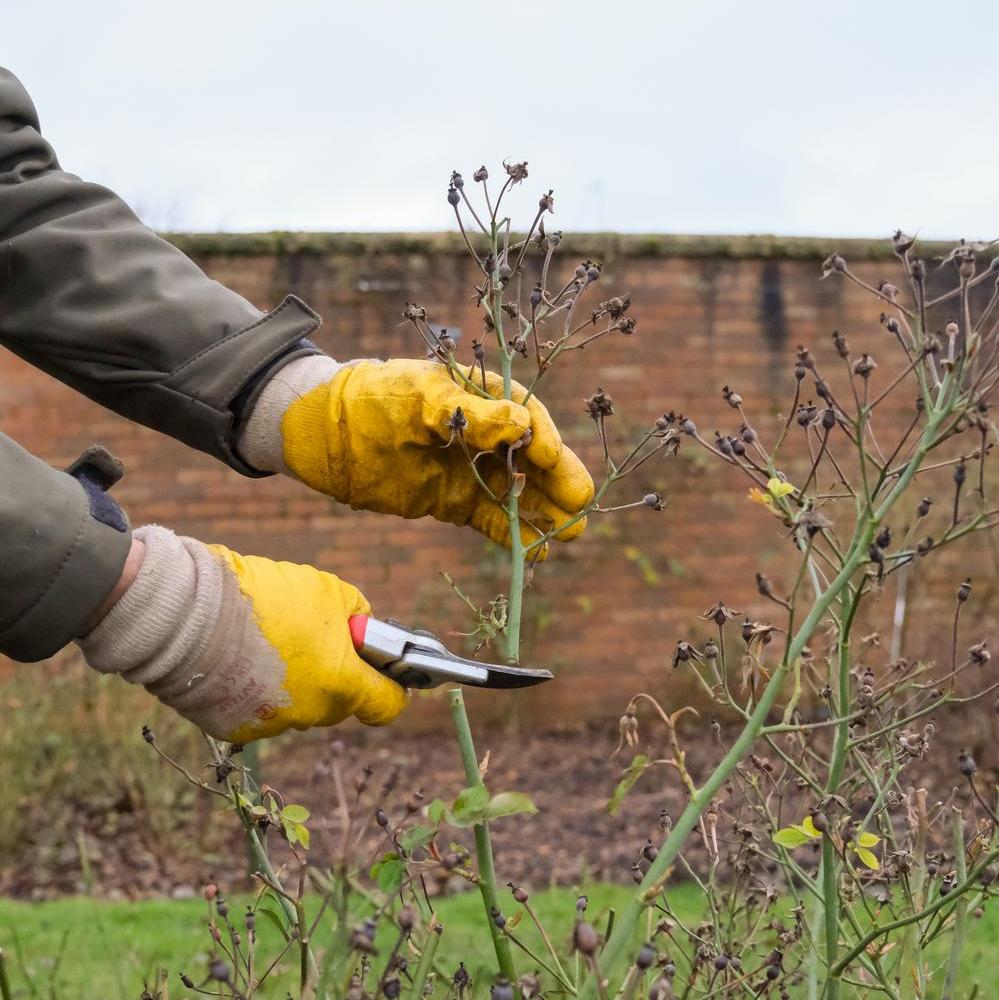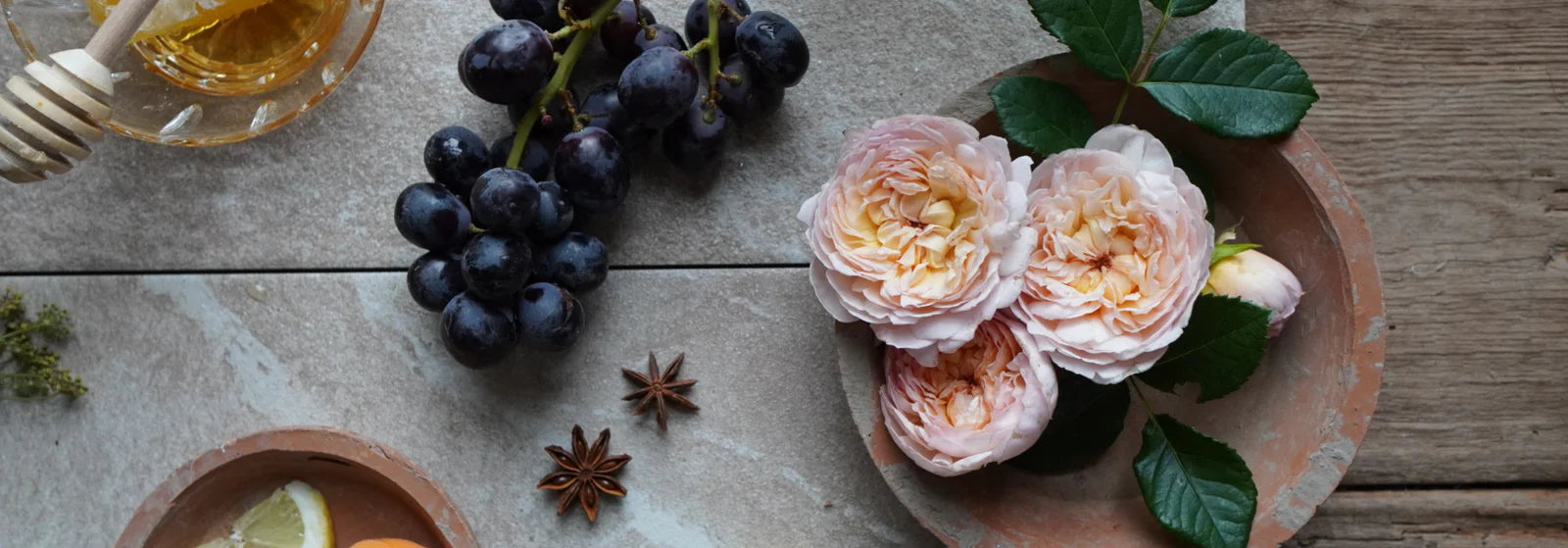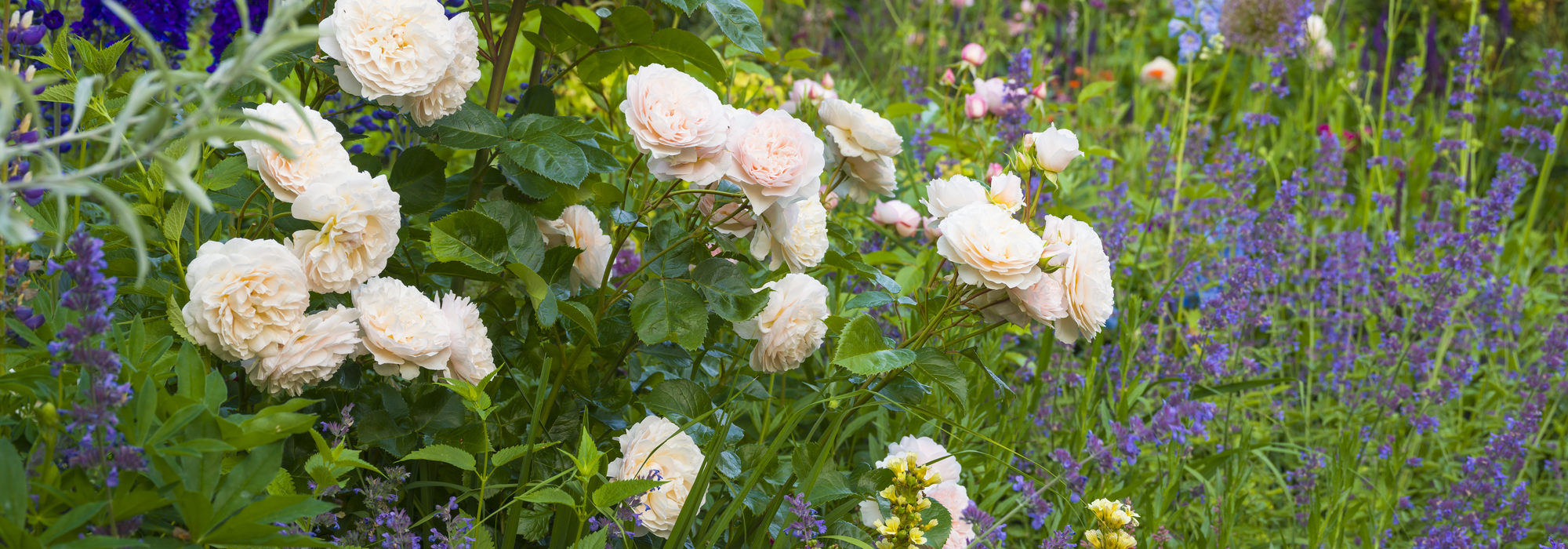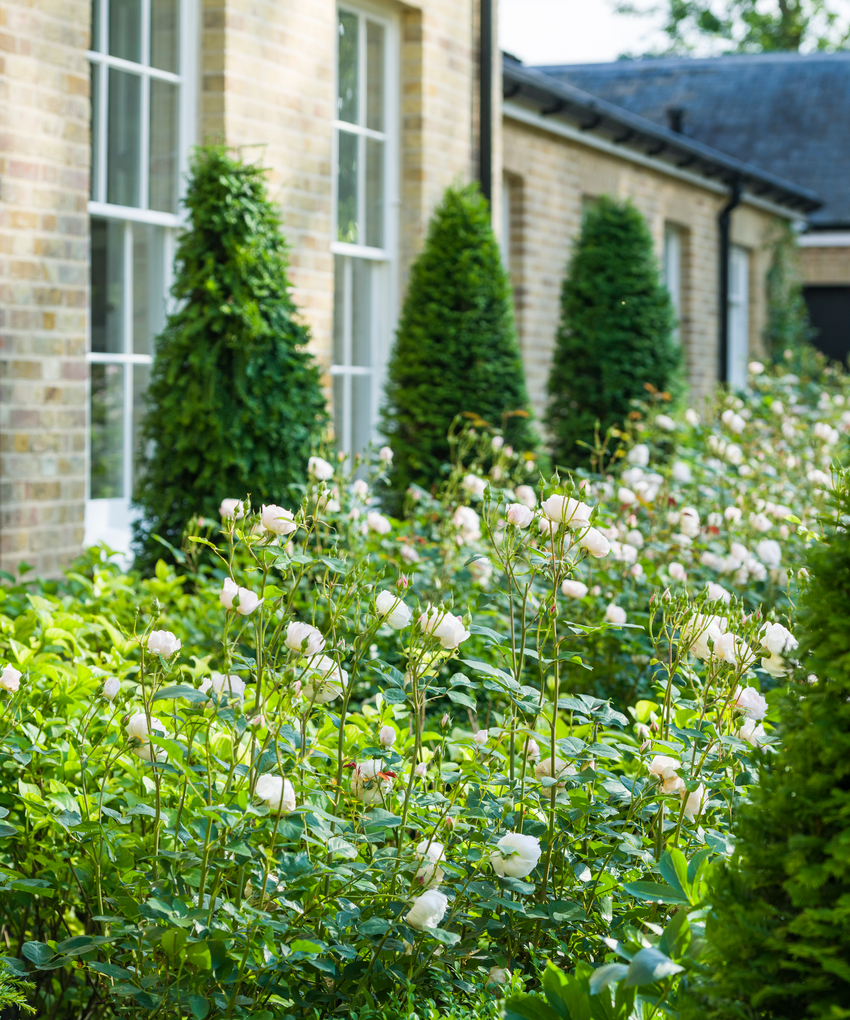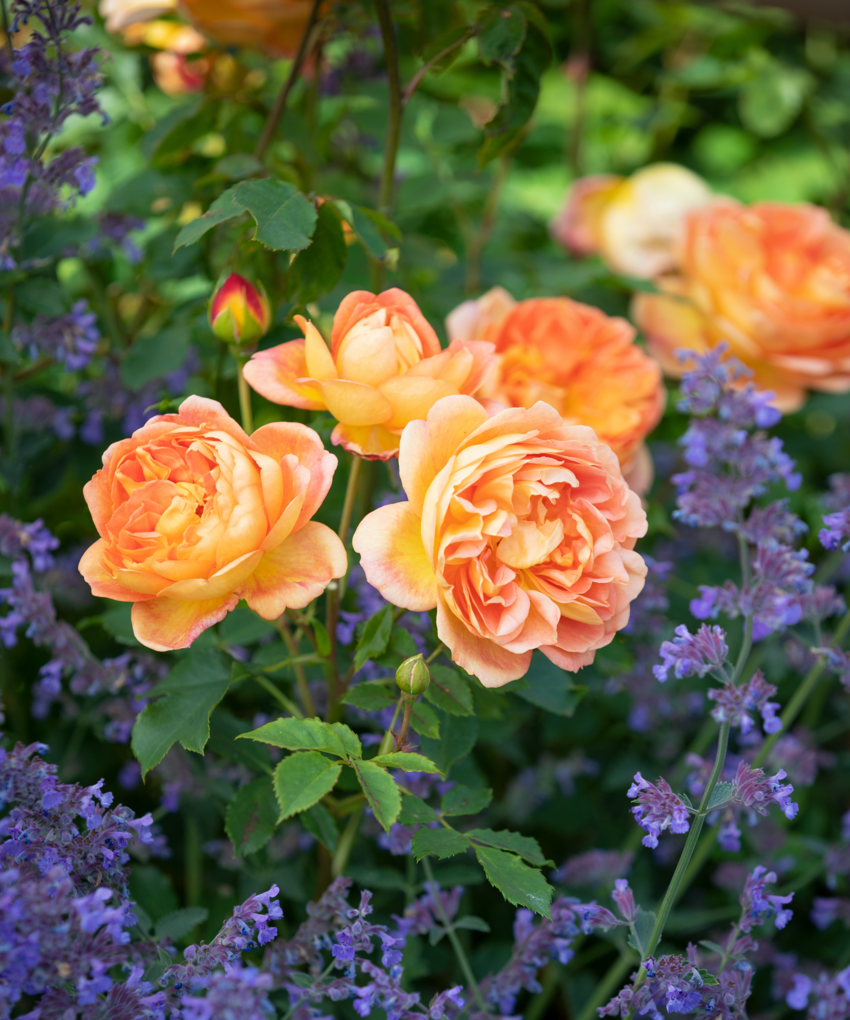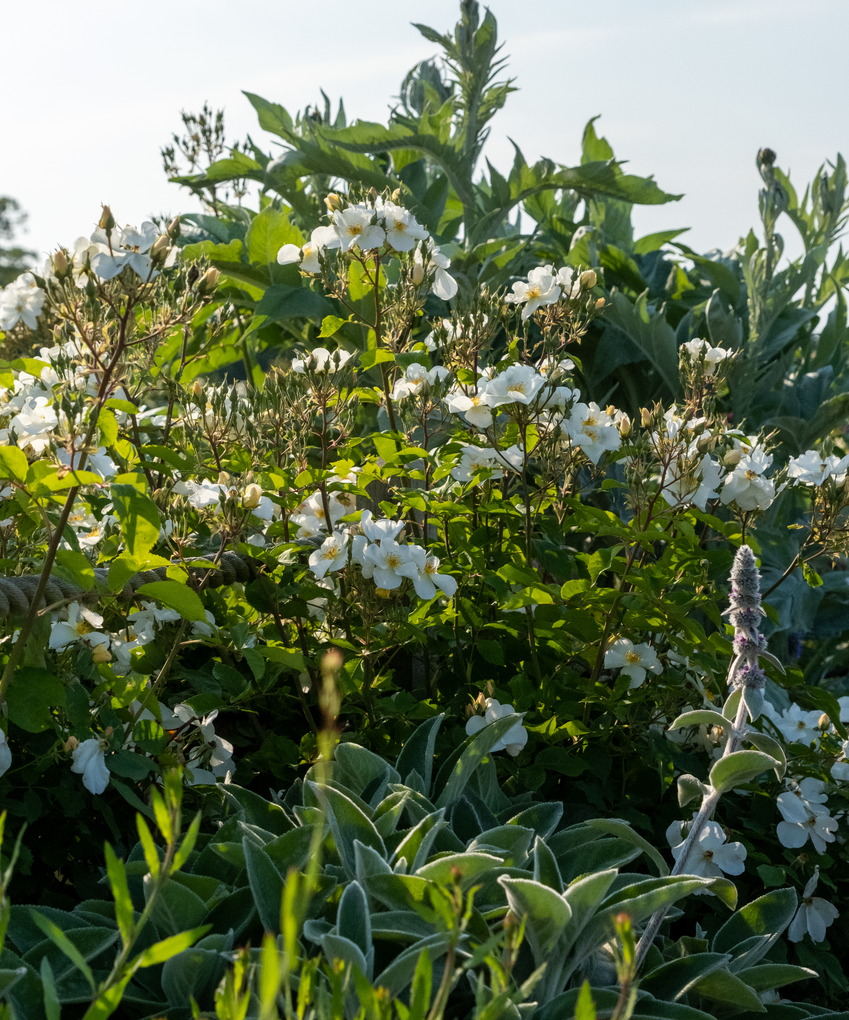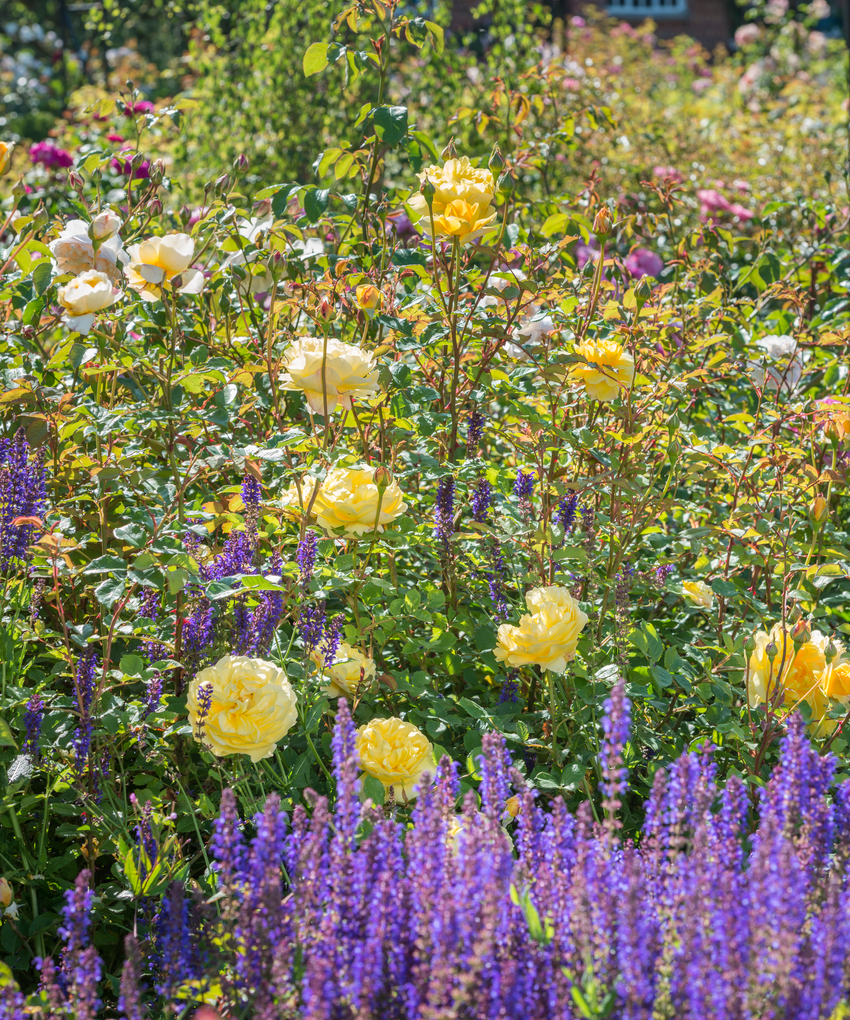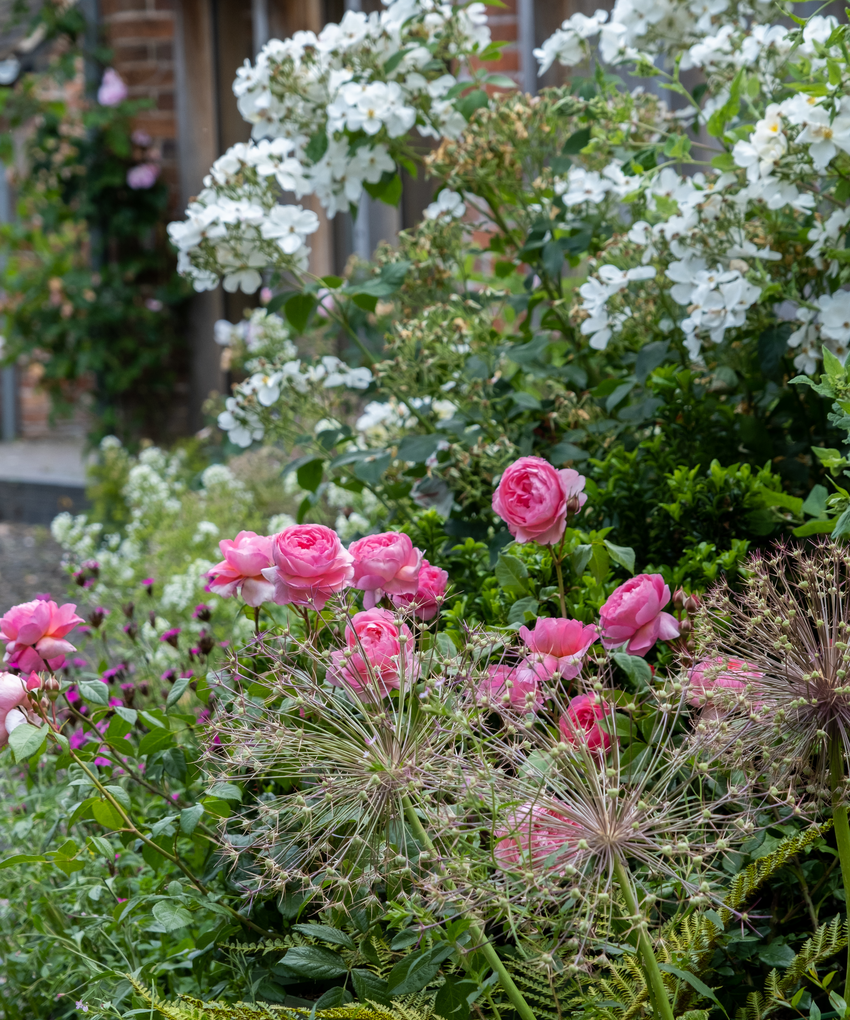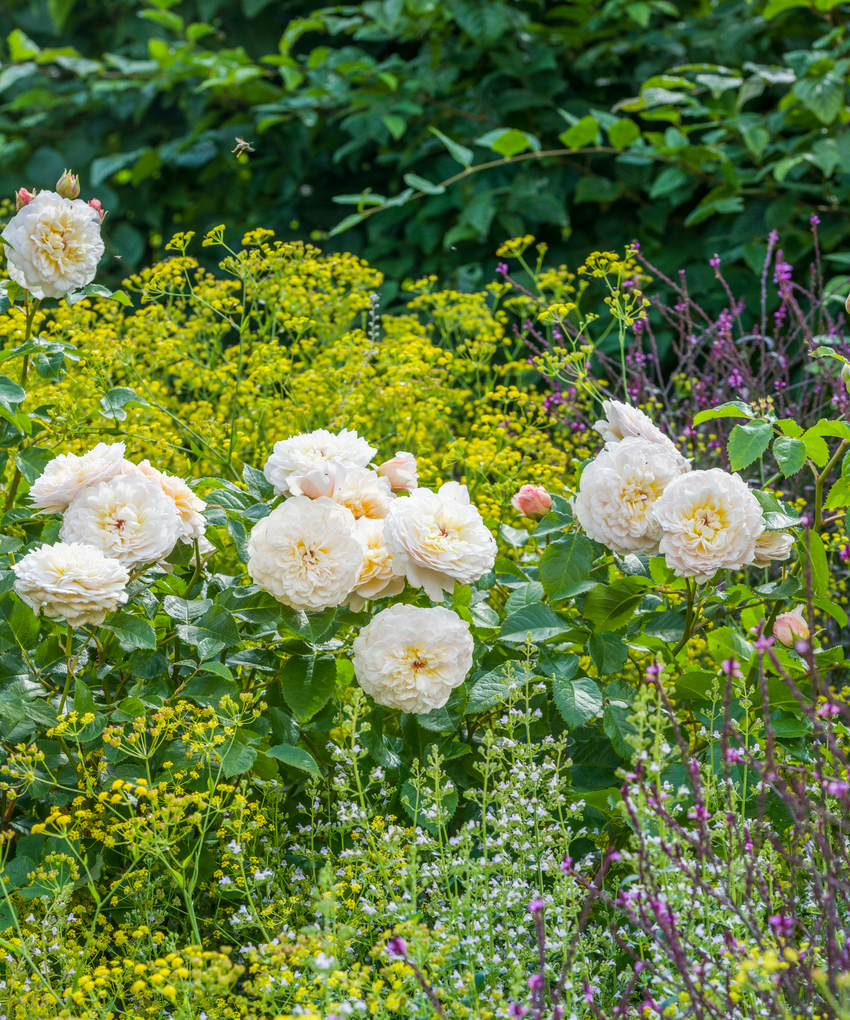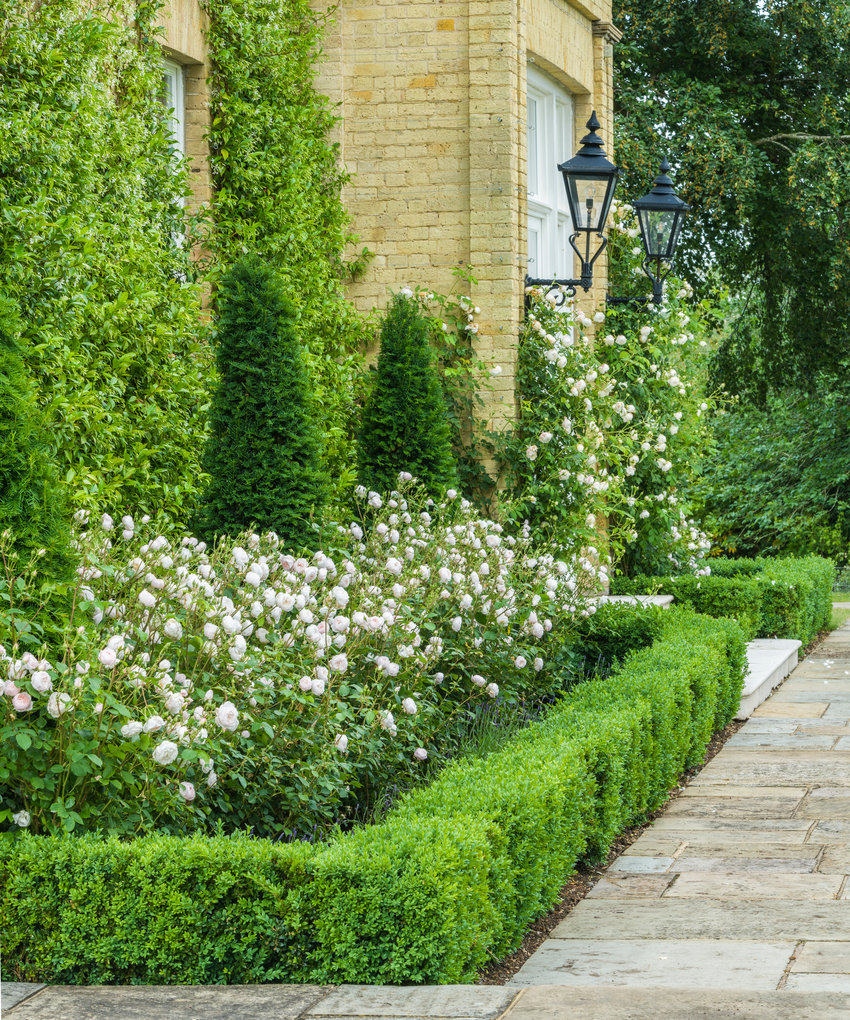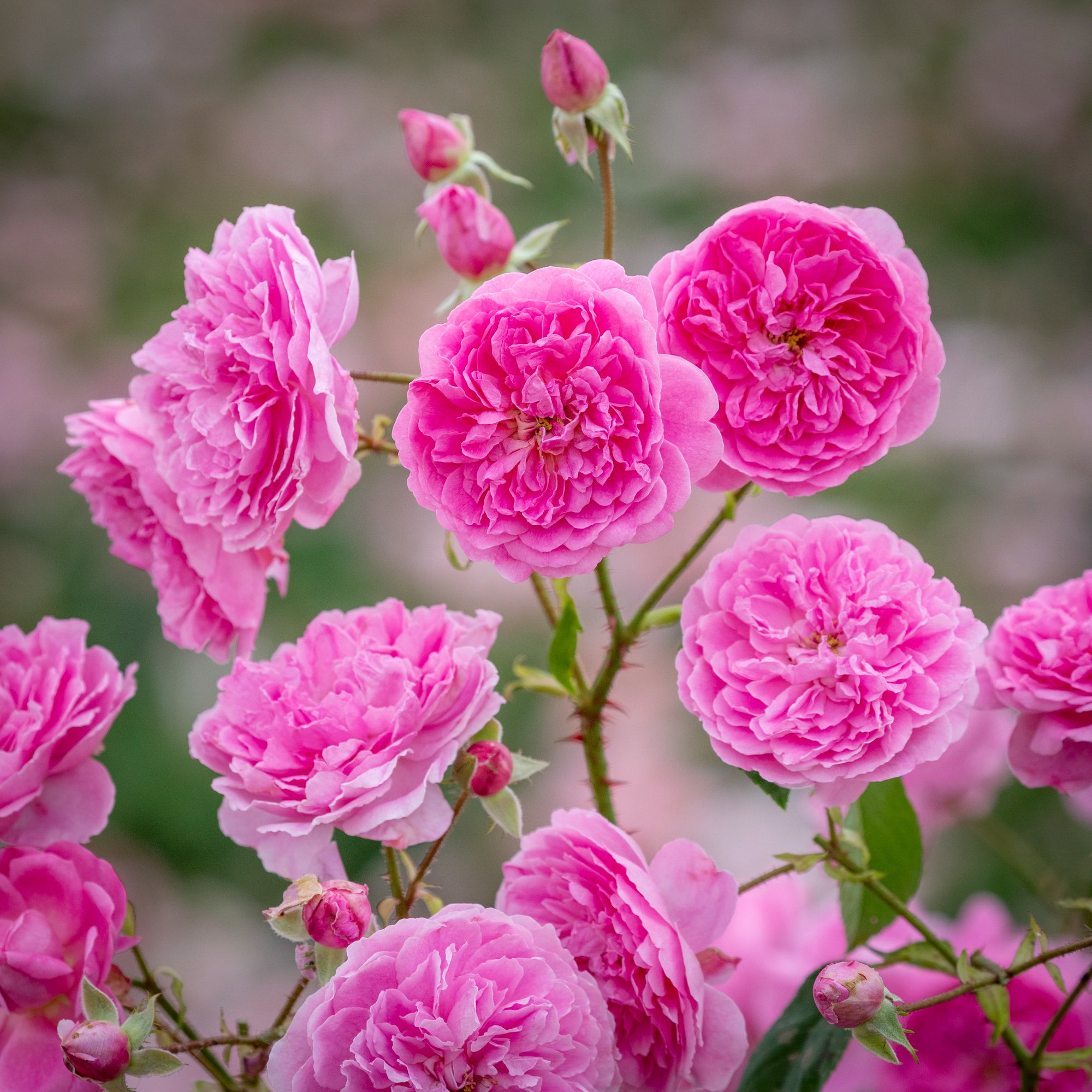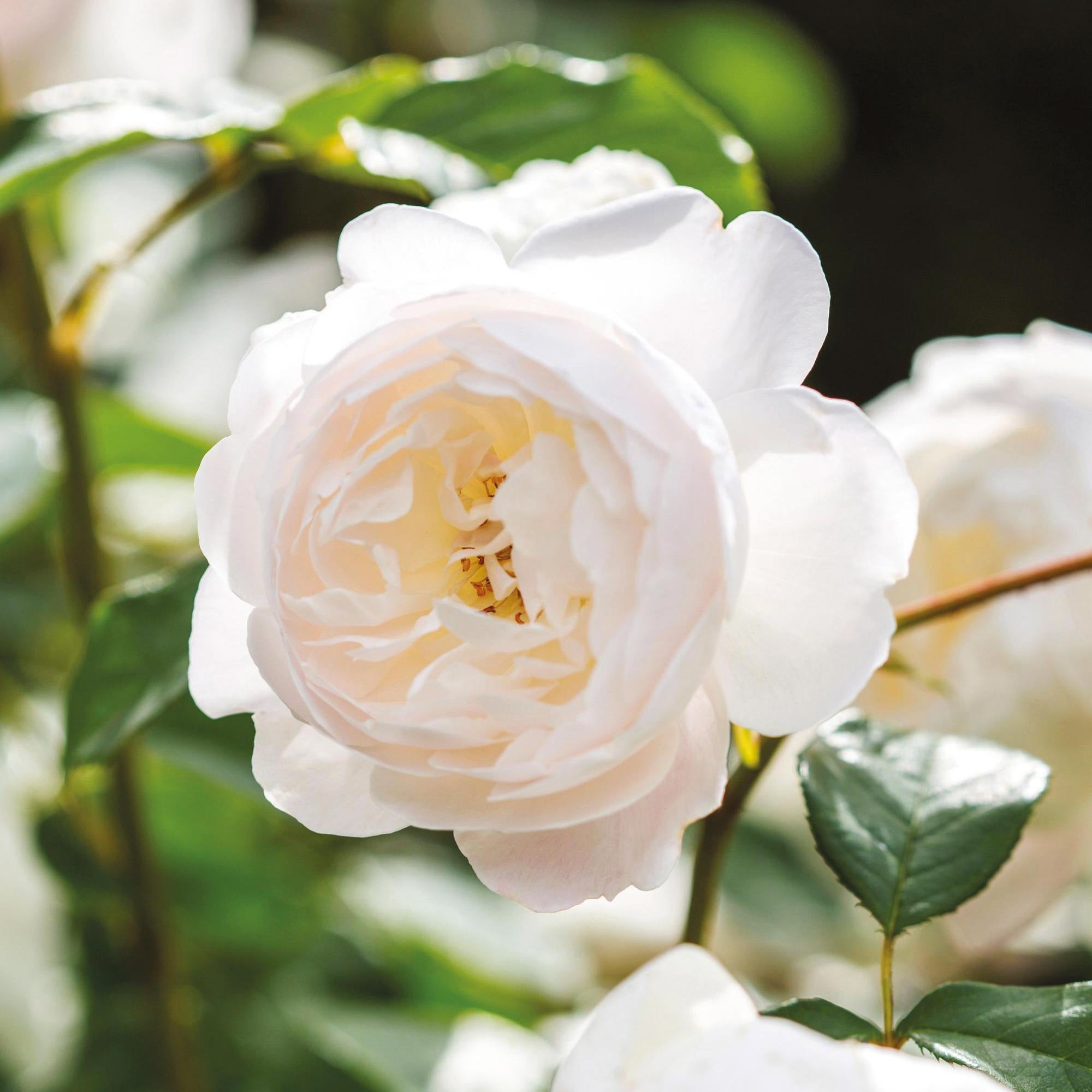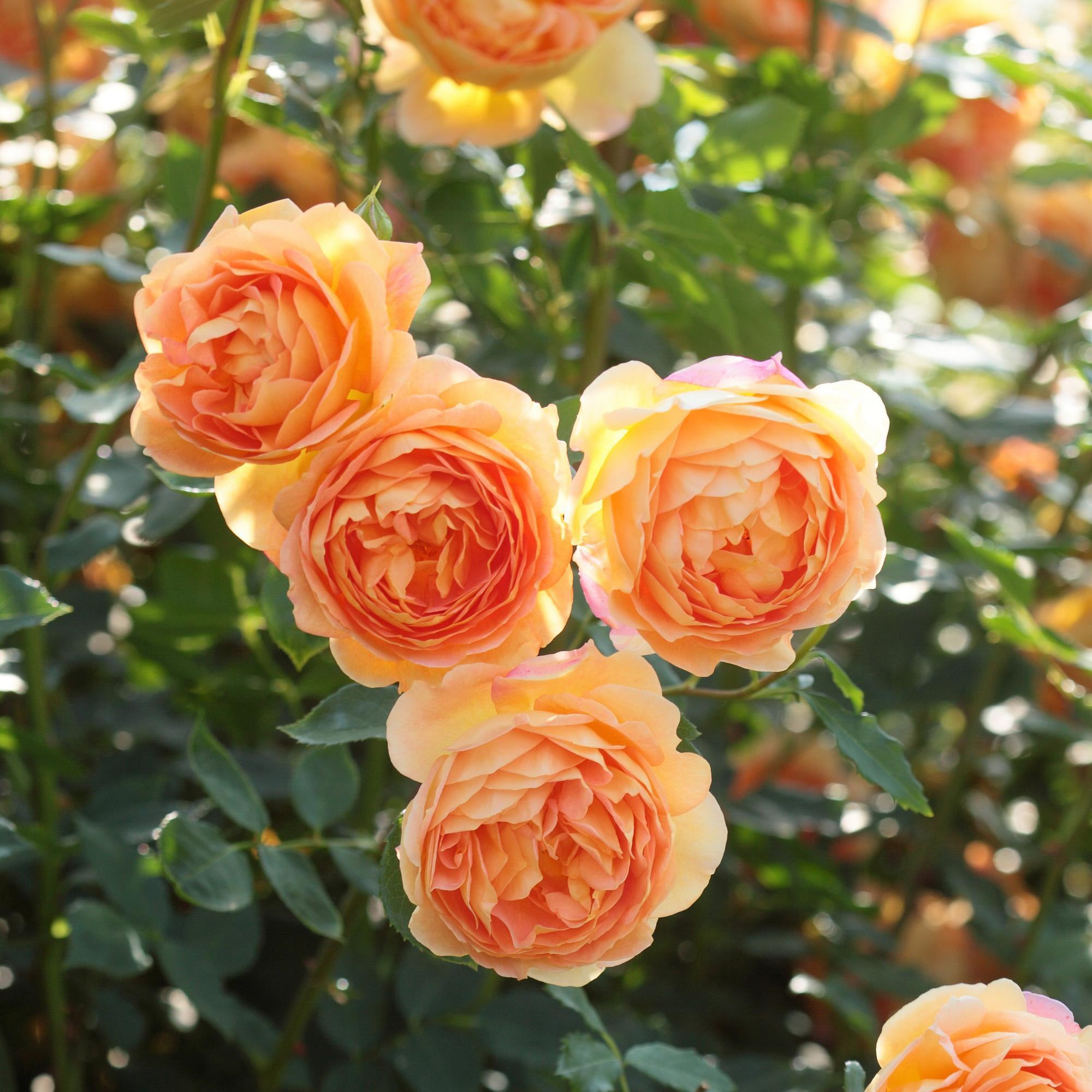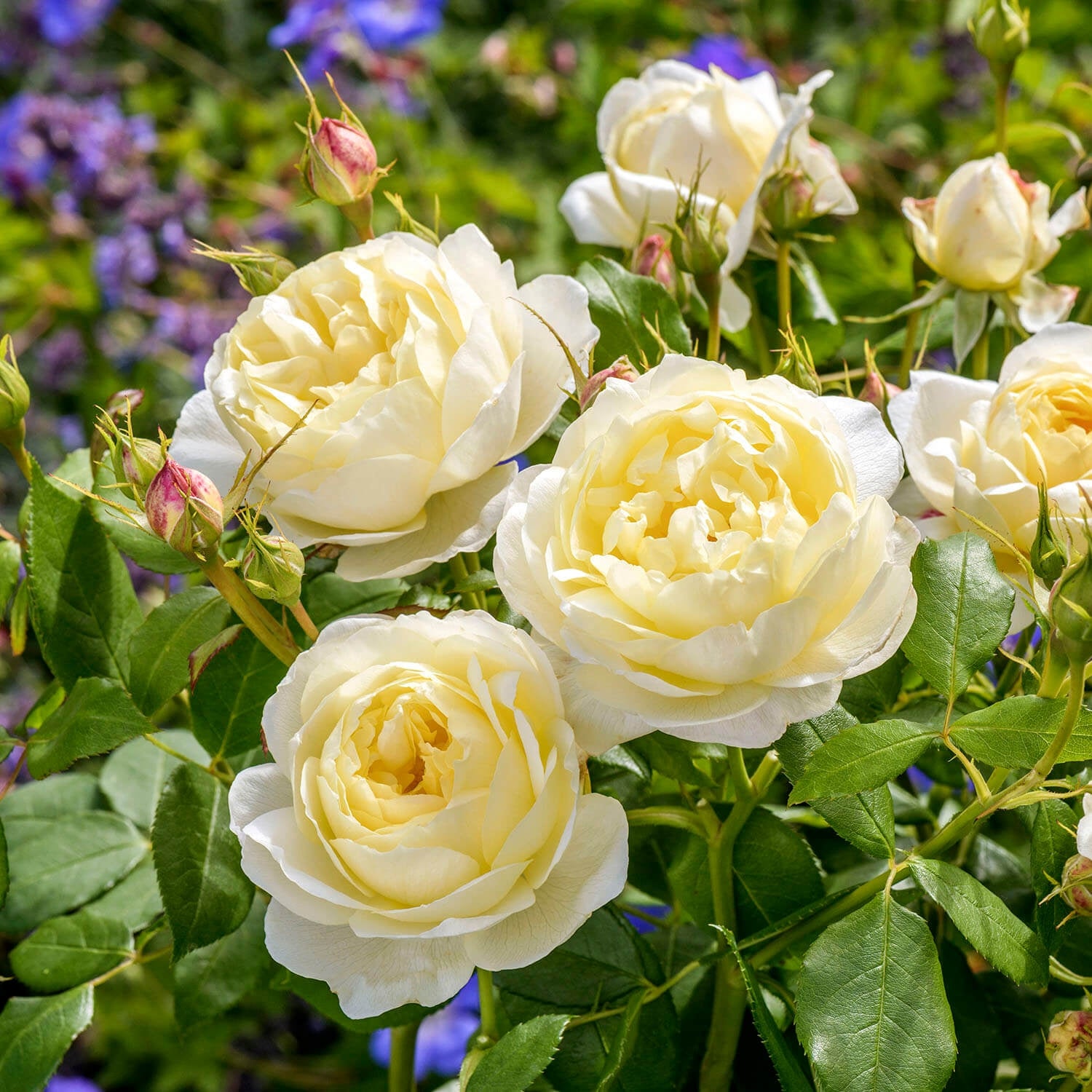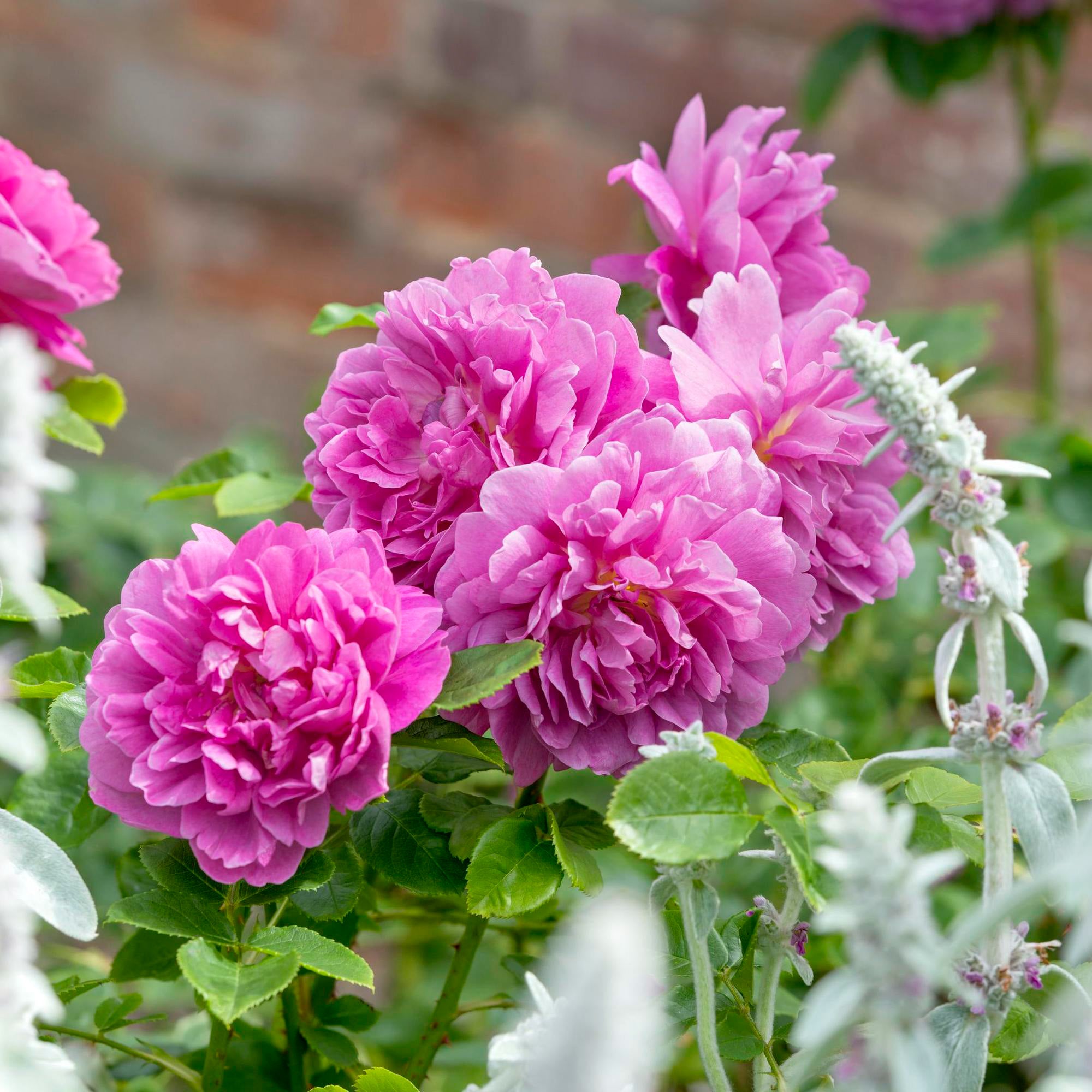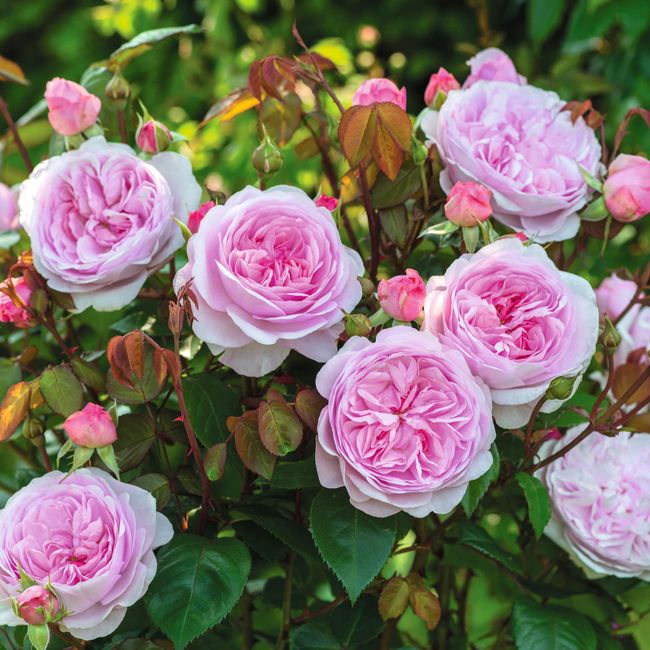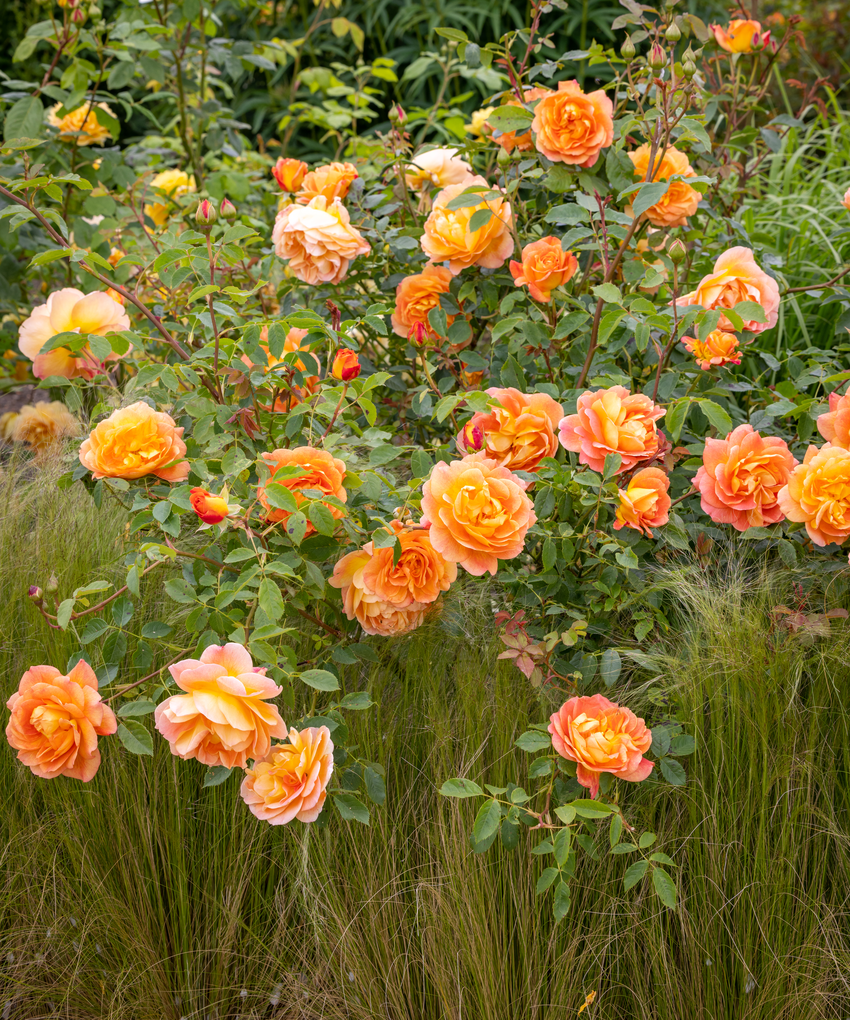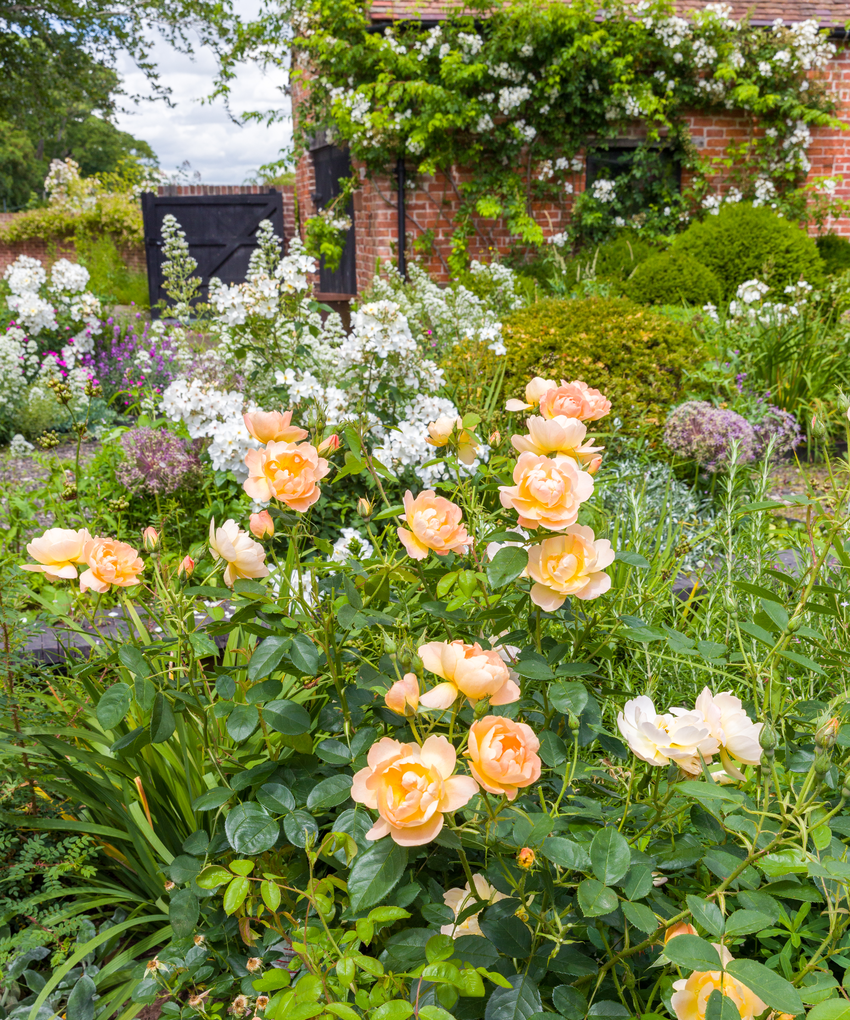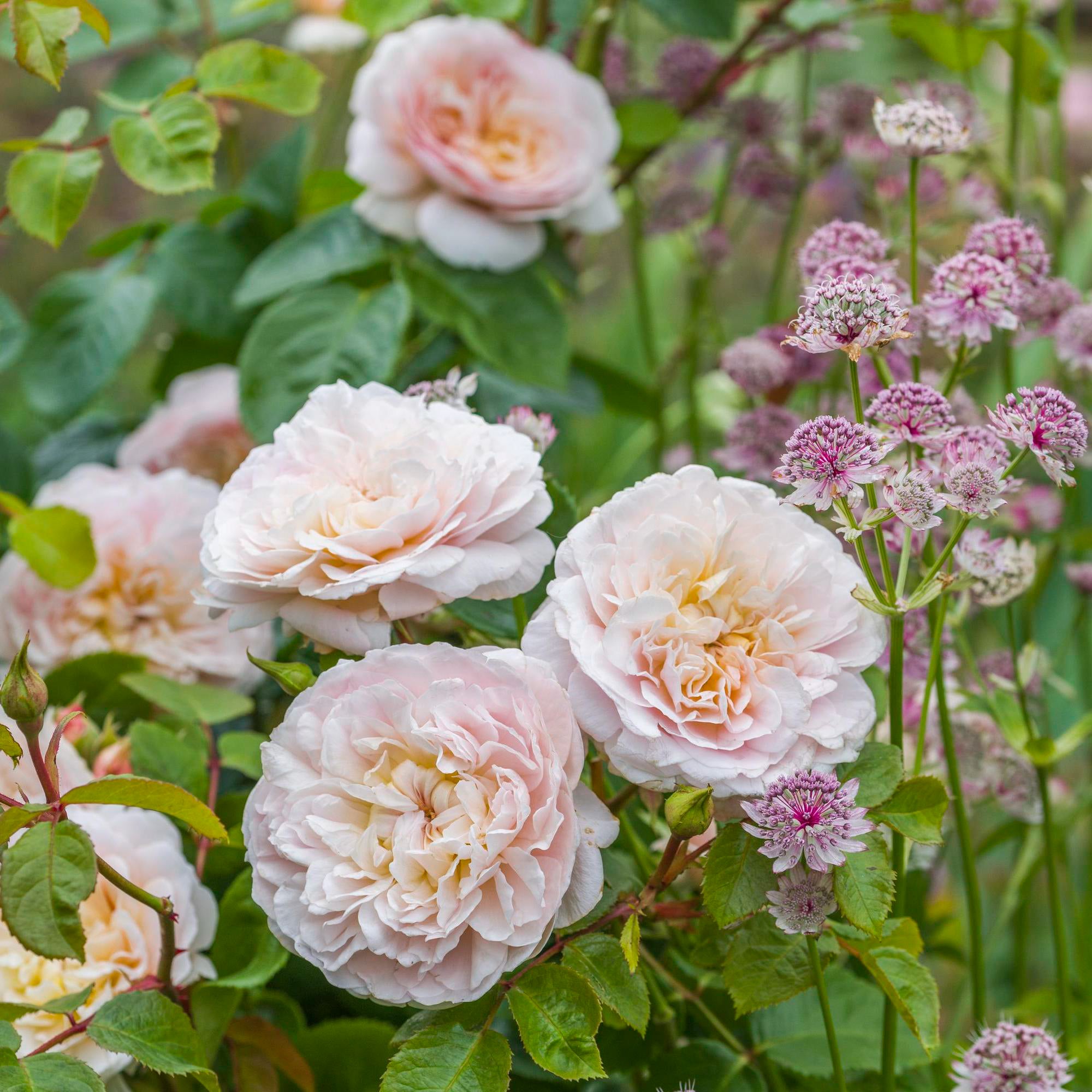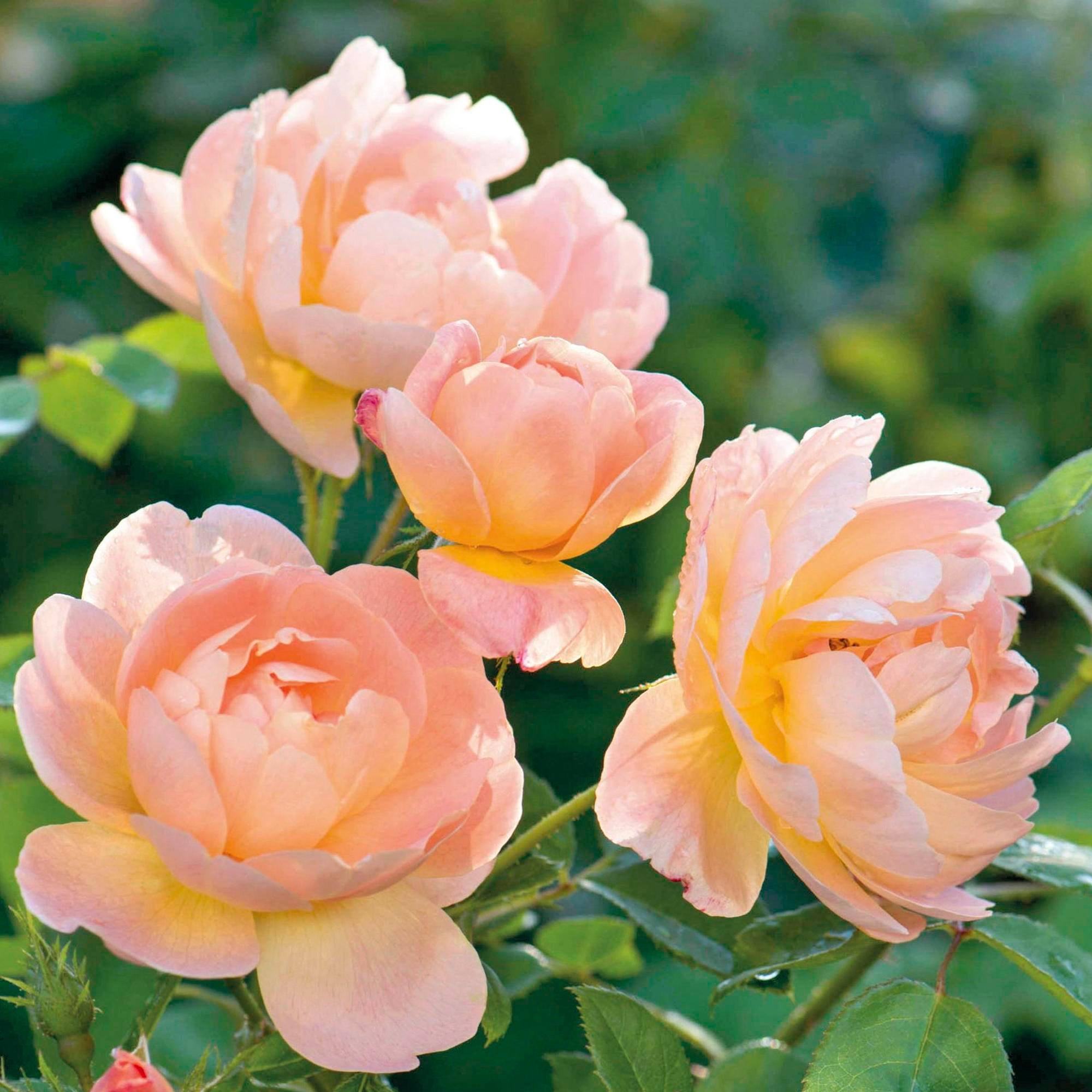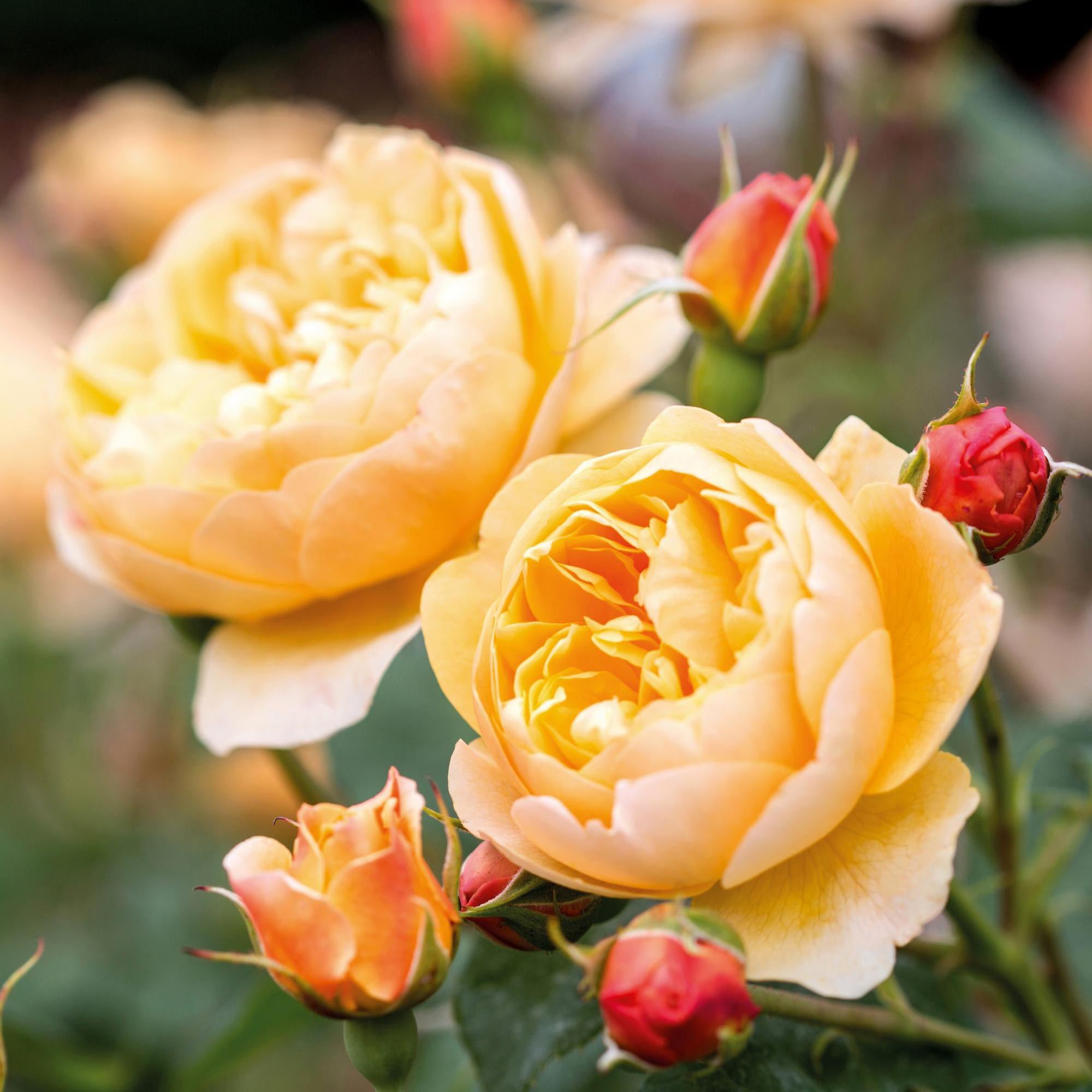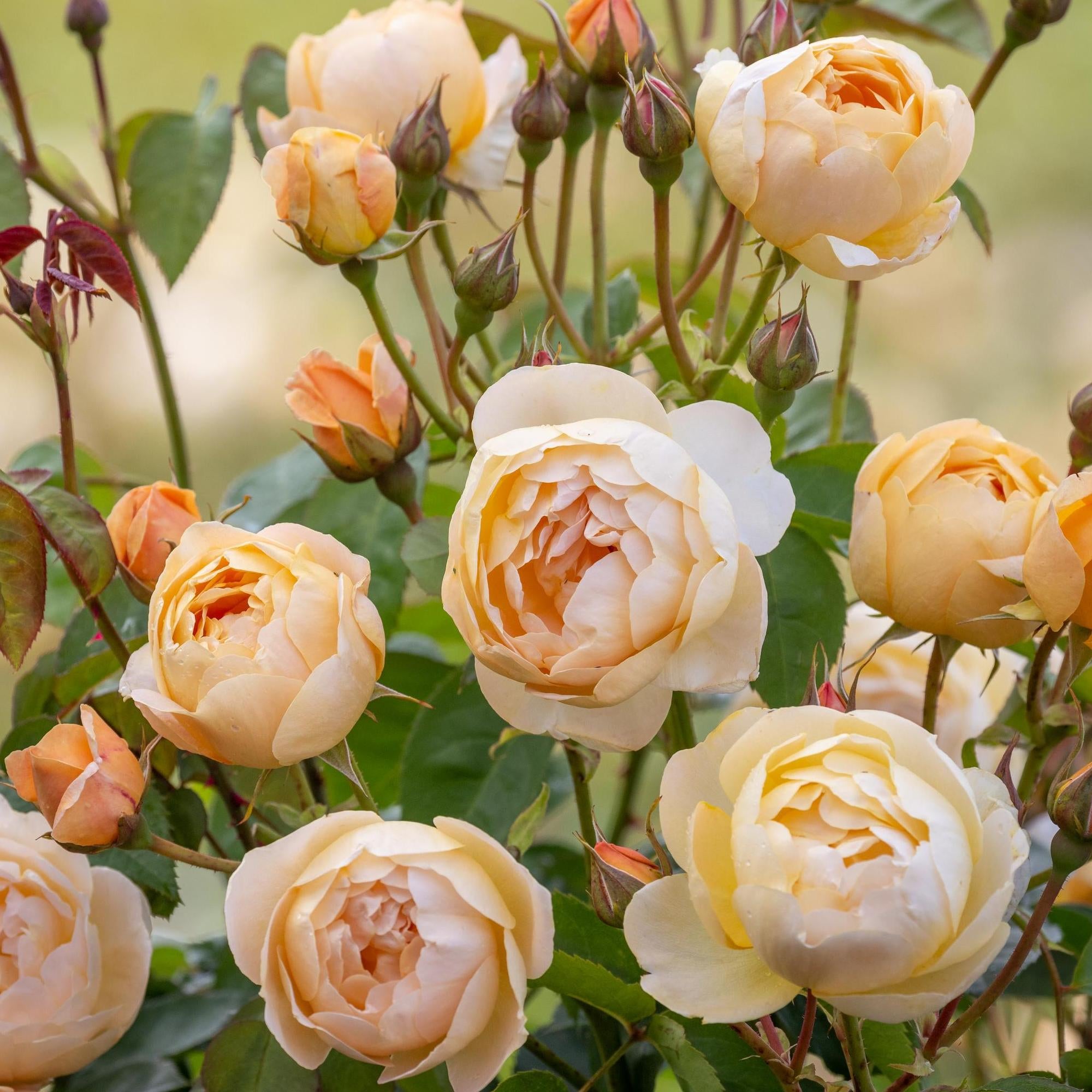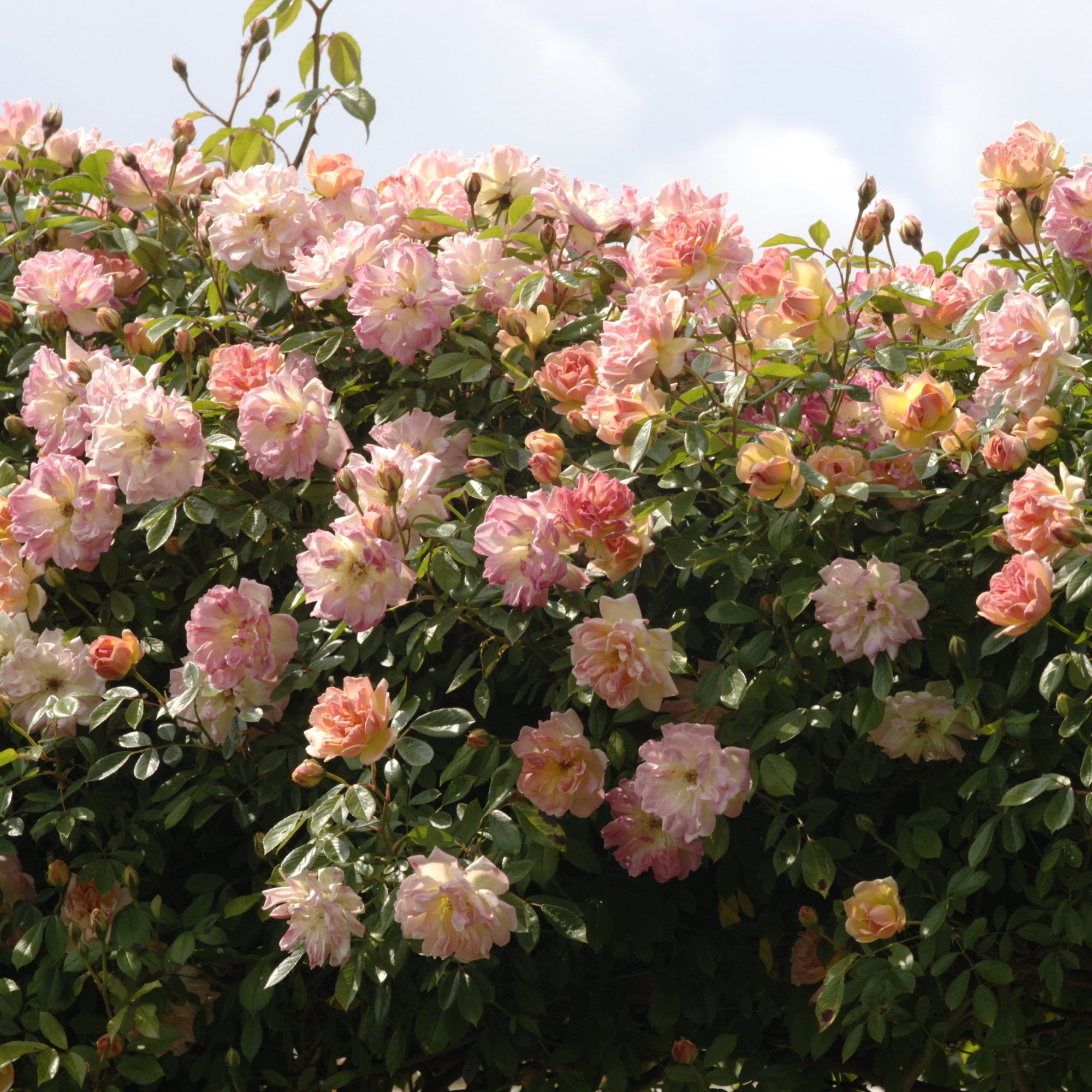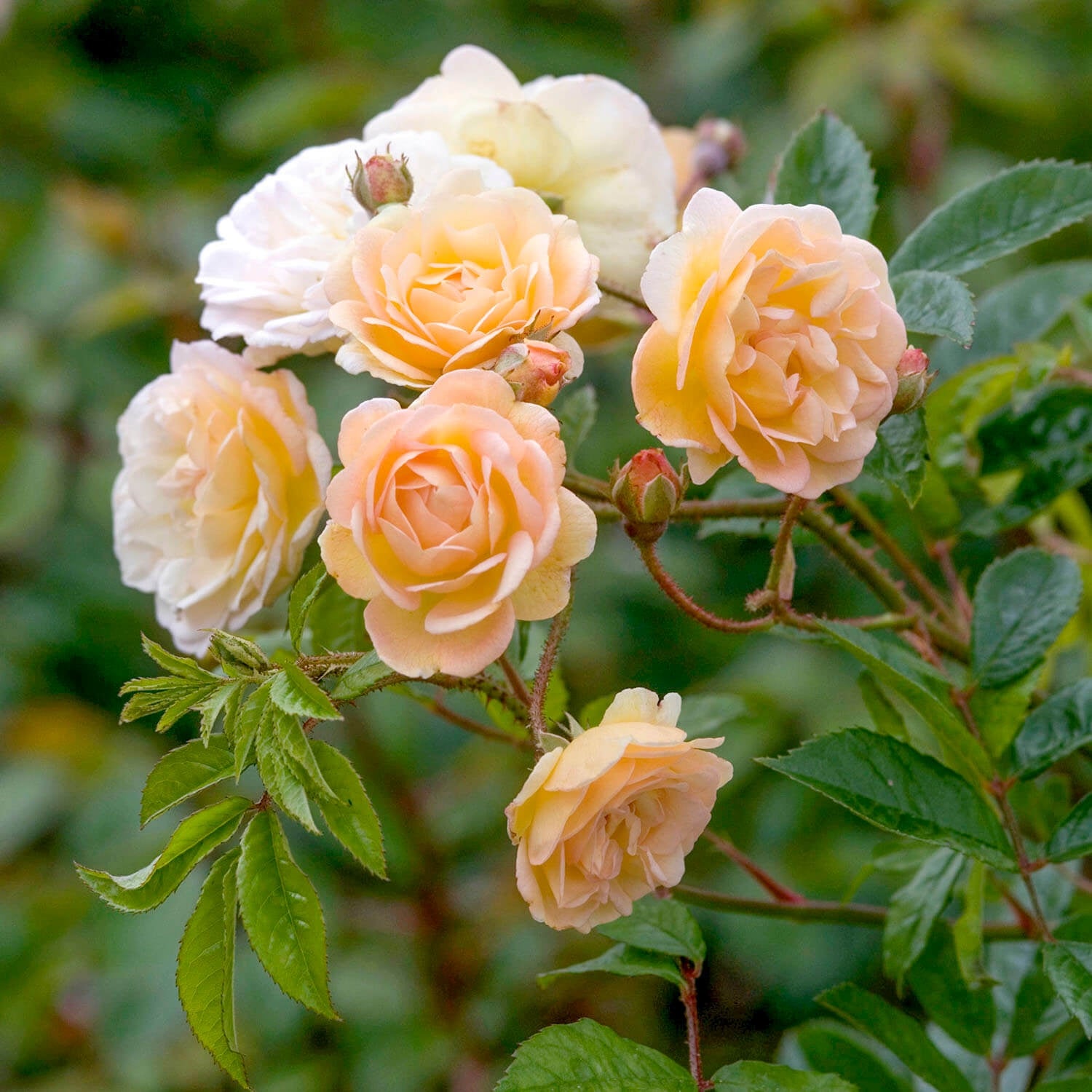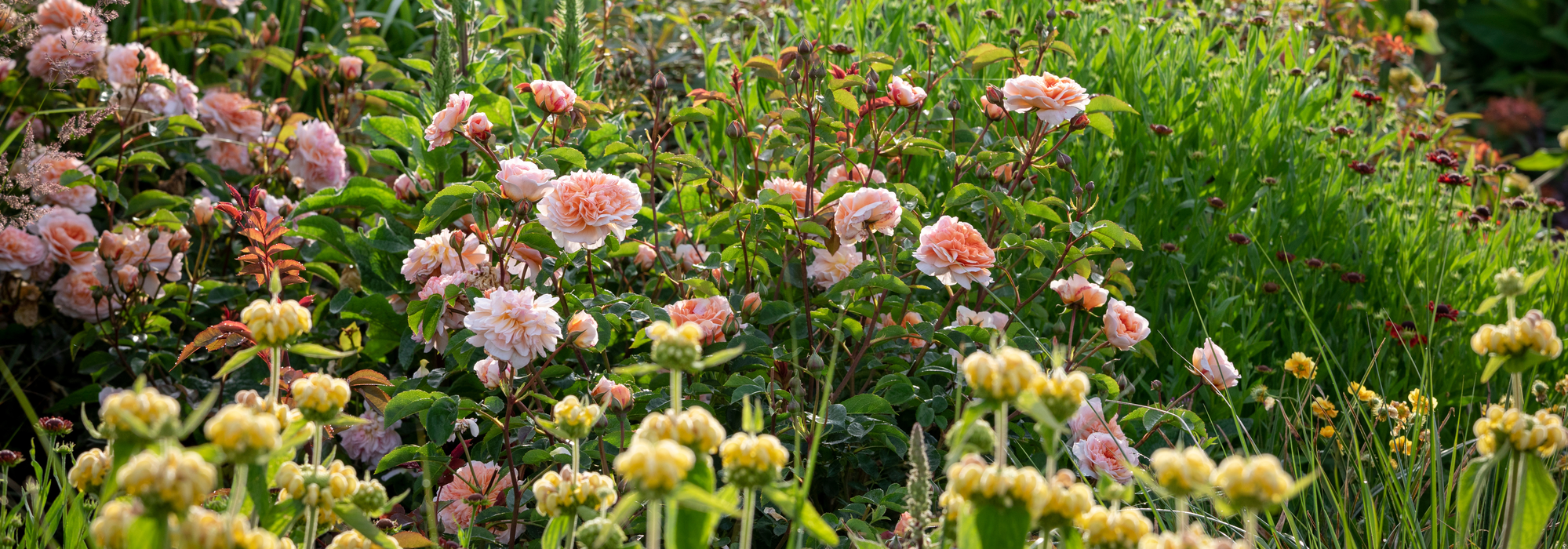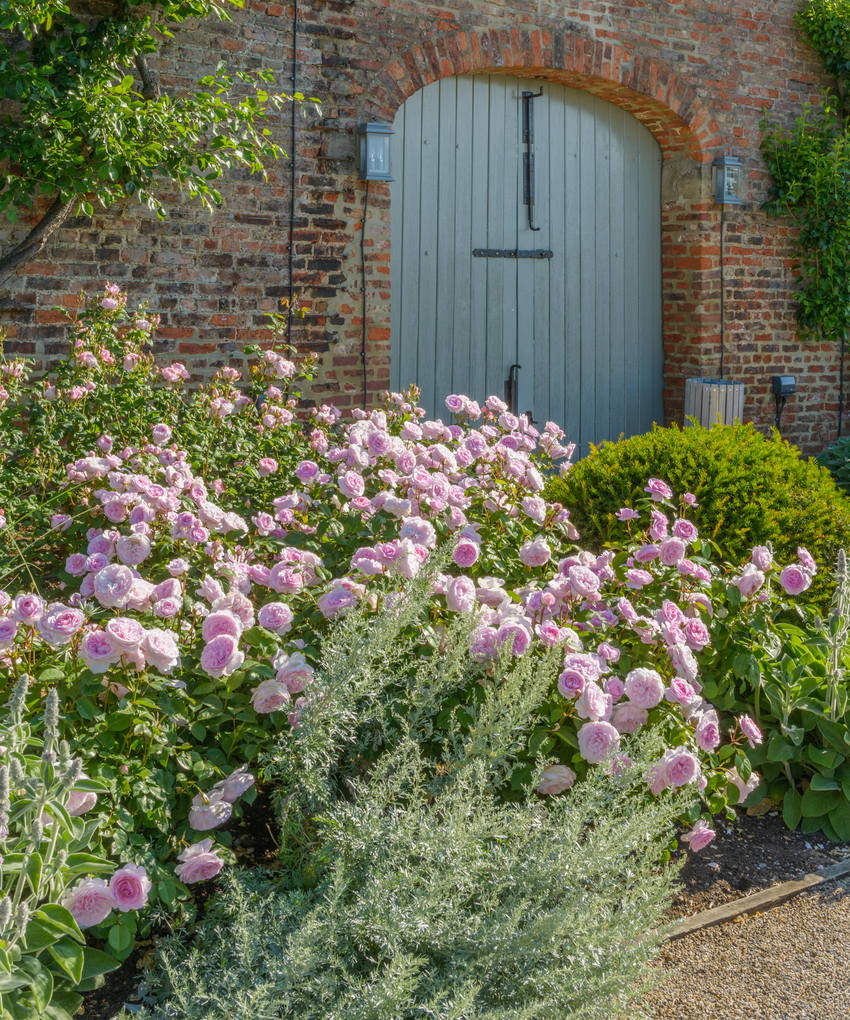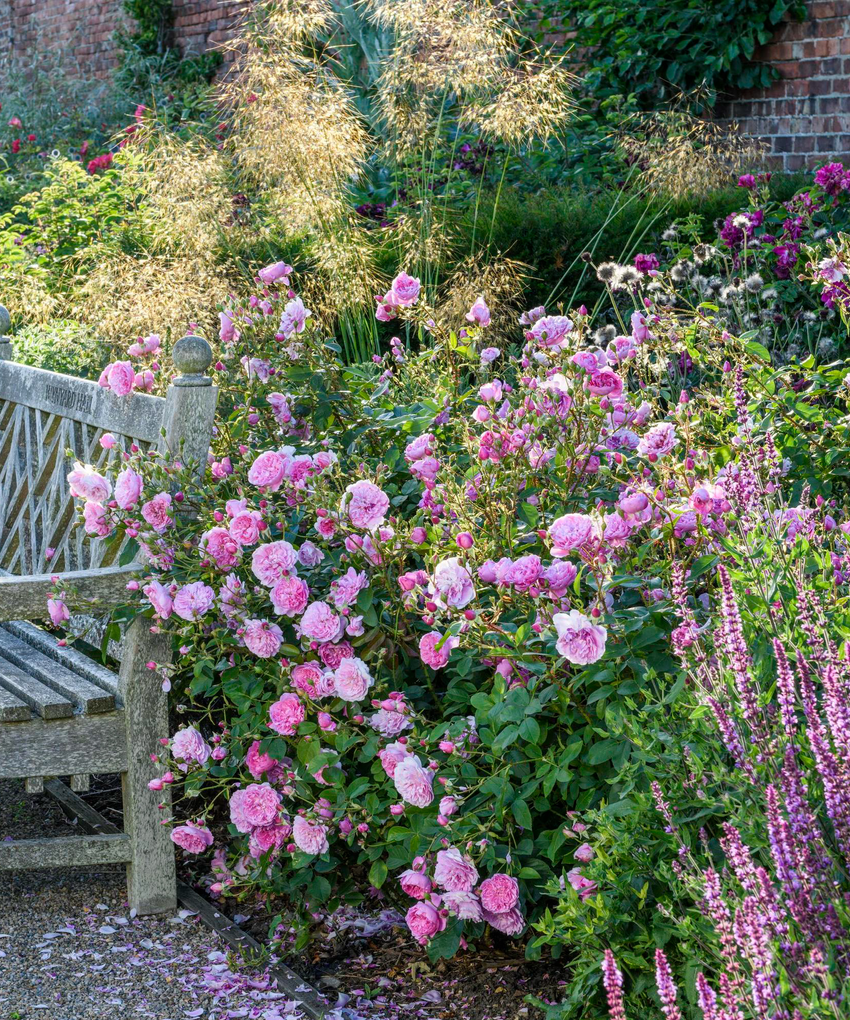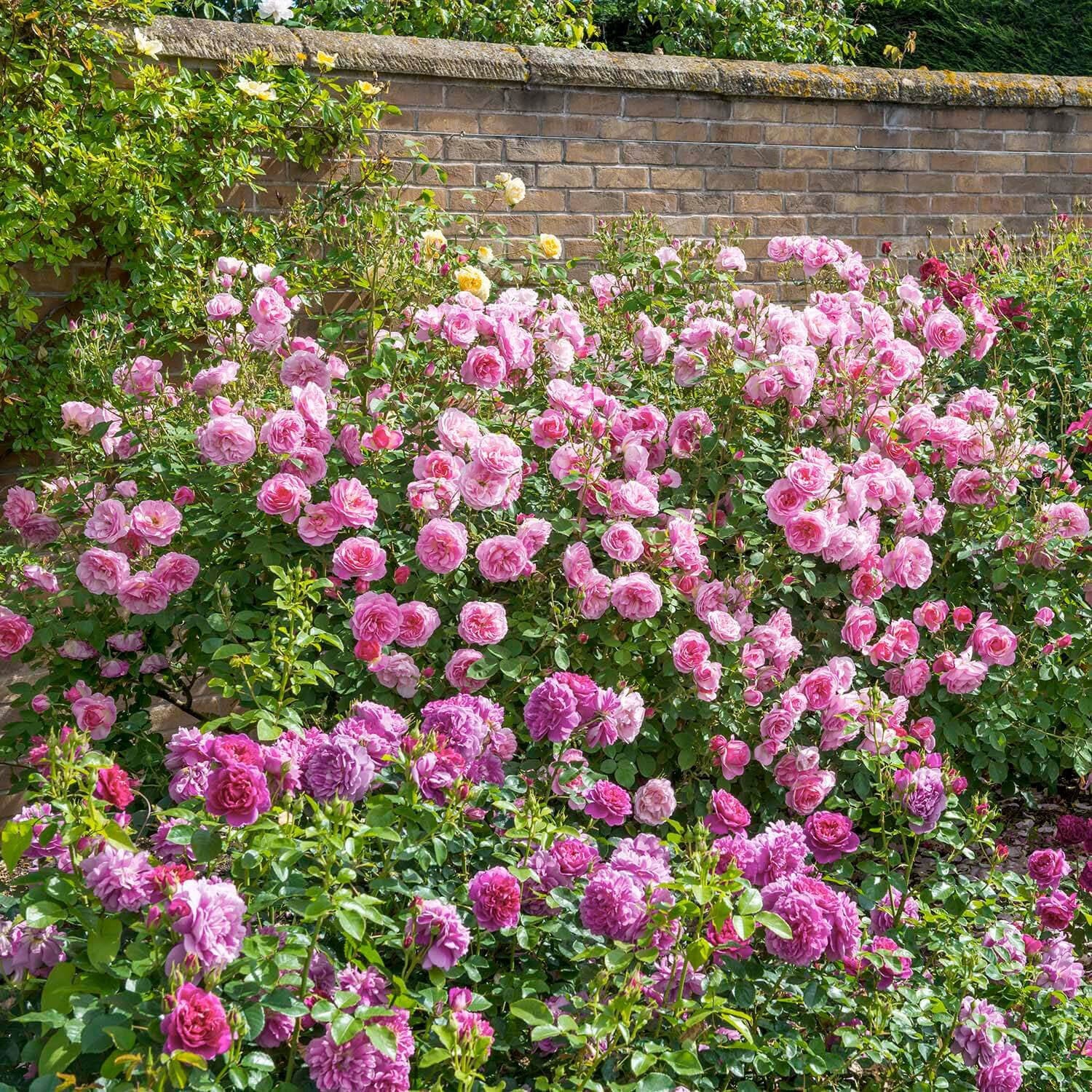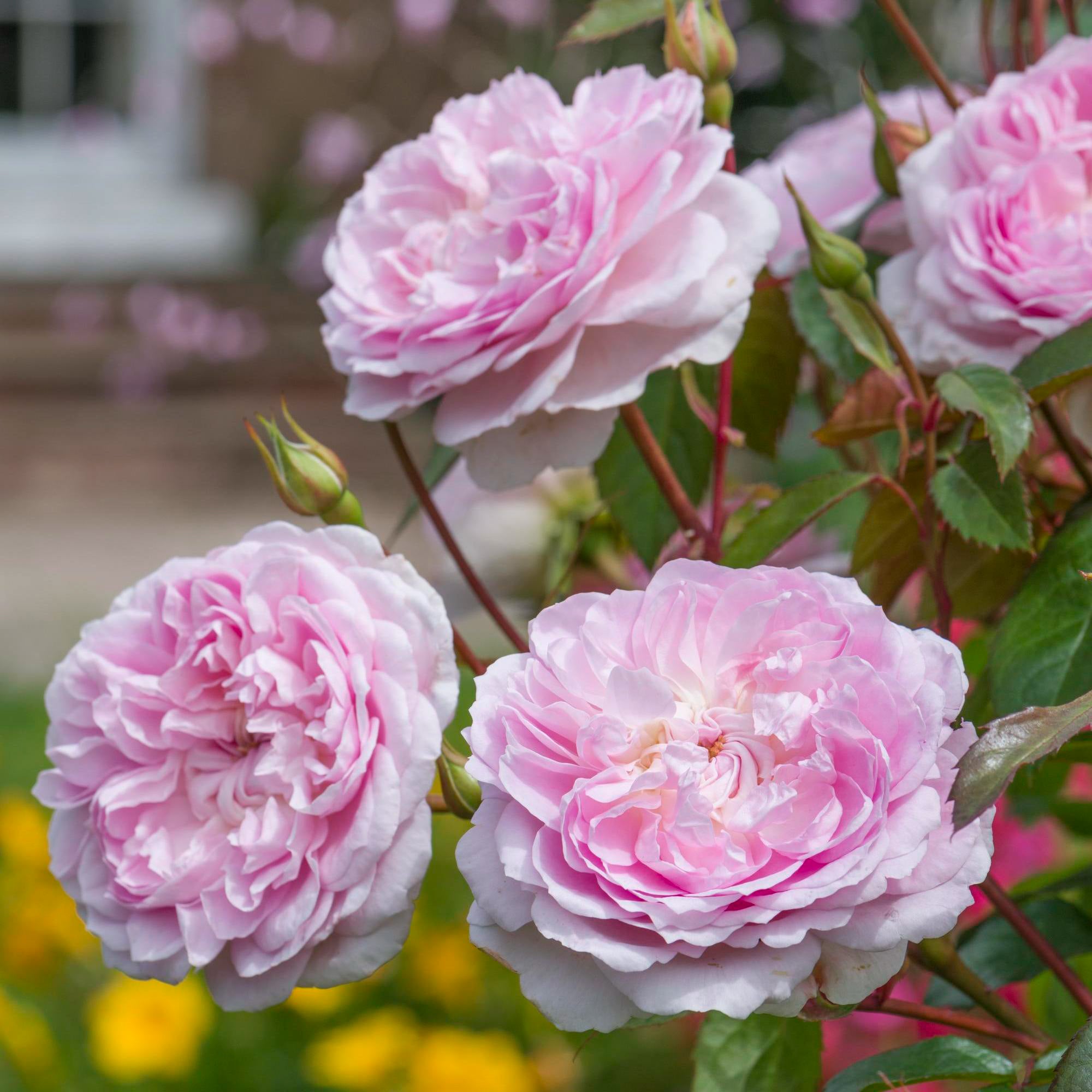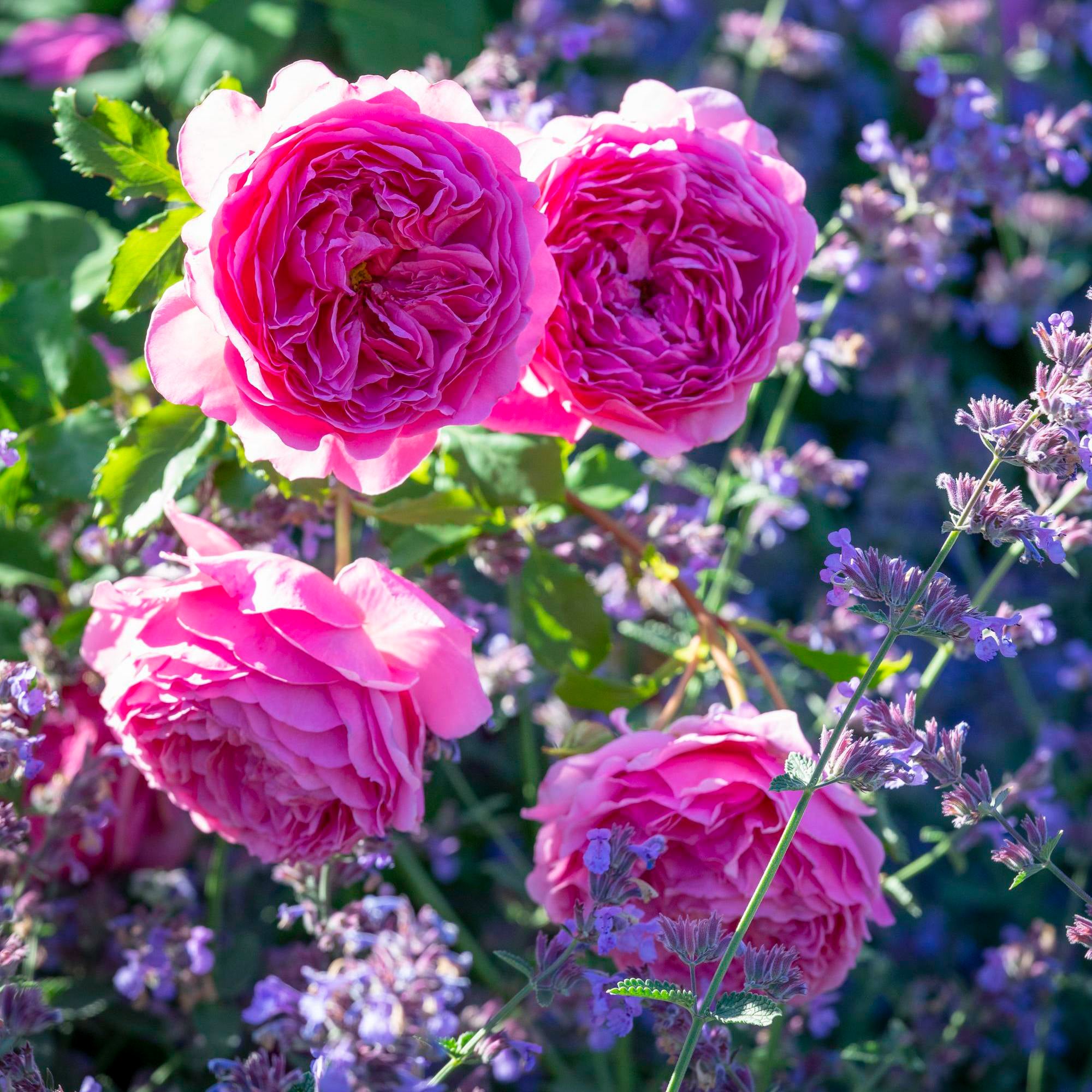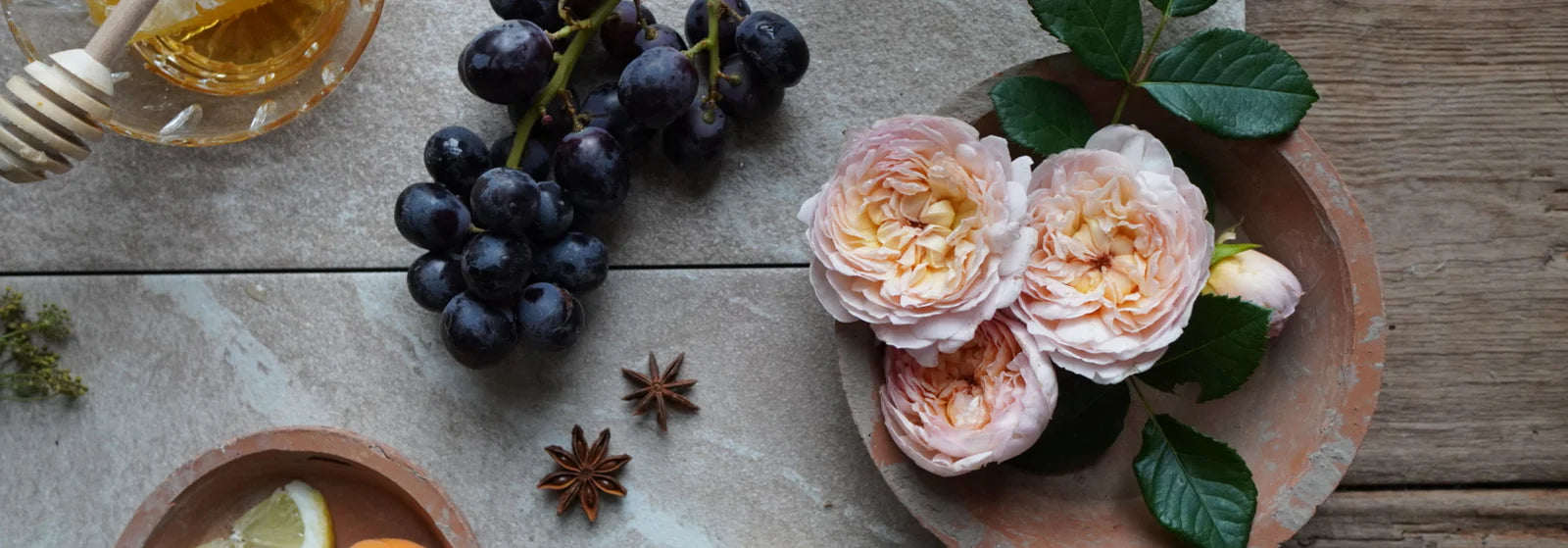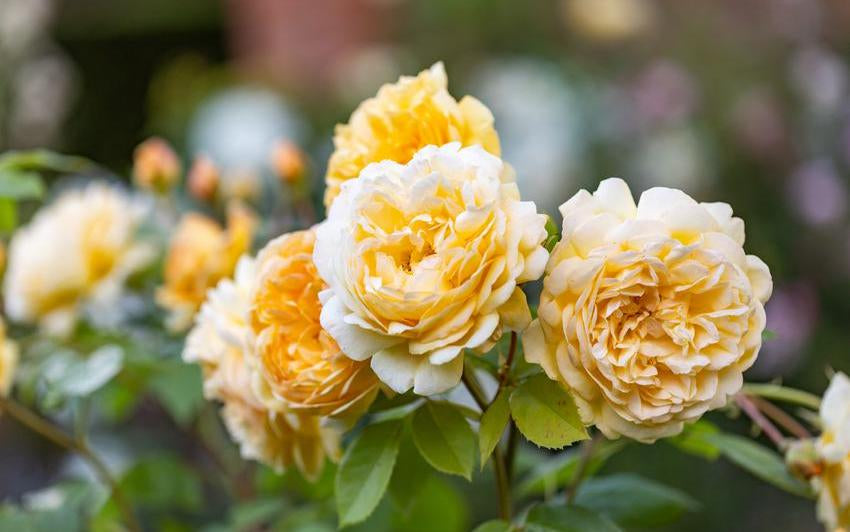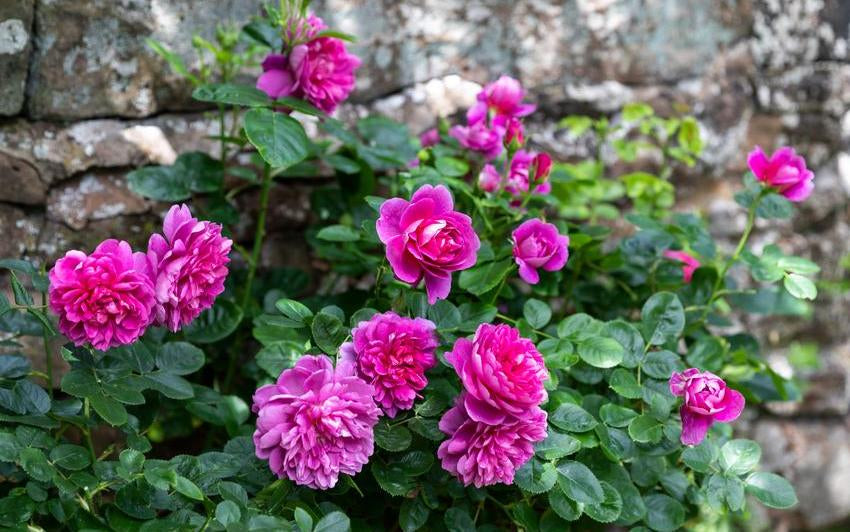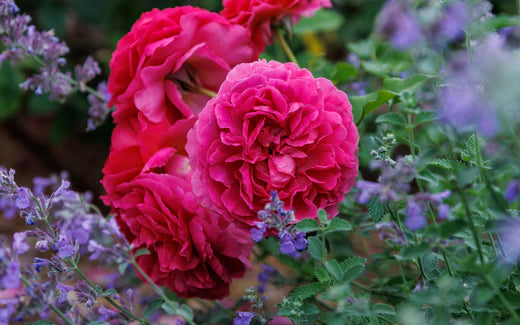Planting roses in a mixed border is one of the easiest ways of enjoying roses in your garden. Combine shrub roses, other shrubs, perennials and annuals to create a tapestry of different colours and textures. English Roses are some of the best-loved, high-performance flowers in the garden, so they are perfect for growing in the mixed border.
The colour of the roses and accompanying plants in a mixed border is a matter of personal taste, but there are a few simple guidelines you can follow. Decide if you want to stick to a narrow colour scheme or if you would like to go for something more eclectic. Larger spaces absorb more colours, whereas smaller gardens benefit from fewer colours. When mixing colours it is important to plant the same plant in groups of 2 of 3 so that each colour covers enough space to make an impact.
Blend both light and mid pink in a mixed border for a romantic effect. Alternatively, simple white flowers allied with green foliage creates a serene feel.
TWO OR MORE COLOURS
For a calm classic mixed border, punctuate whites and creams with deep purples or reds. For something more uplifting, combine orange shades with blues and light purples. The more colours you combine together, the more energetic a feel you will create, especially if it includes a number of stronger shades like reds, yellows and purples.
The colour of foliage is also worth considering when planning a mixed border. Choose both darker and lighter greens, as well as red-toned foliage, to add both depth and colour, or grey-leaved cotton lavender and artemisia to act as a natural backdrop to vivid colours.
Combine with purple
Plants with purple or blue flowers, such as salvia and catmint, work especially well in mixed borders as there are not really any roses in this colour group. See our recommendations for Purple Partnering Plants.
In a mixed border, combine shrub roses, other shrubs, perennials and annuals to create a tapestry of different colours and textures. Avoid over crowding beds and borders and choosing vigorous companion plants, which will create too much competition with the roses.
Create height variation in a mixed border by planting taller shrub roses and companion plants towards the back of the bed. Towards the front, place shorter, preferably fragrant roses and accompanying plants. Punctuate the middle of the border with tall flowering annuals or perennials, such as foxgloves, alliums, verbascums and delphiniums.
EDGE WITH BOX
As a finishing touch, edge mixed beds and borders with a low box hedge. It will also hide any bare stems.
Repeat flowering roses have a long flowering season but it's still worth planning your mixed border so that other plants can provide interest and fill the space when your roses are dormant.
-
Rosa 'Emily Brontë' (Ausearnshaw), Bupleurum falcatum, Calamintha nepeta and -Verbena officinalis var. grandiflora 'Bampton'Emily Brontë®
-
Rosa Desdemona® (Auskindling) shown planted behind a box hedge.Desdemona®
In winter and early spring, small evergreen shrubs and perennials are vital for adding colour with foliage. Hellebores, pulmonarias and primulas all work well. You can also incorporate bulbs, such as snowdrops, crocuses and dwarf daffodils.
LATE SPRING
For late spring colour in a mixed border, before the roses come into full bloom, try tulips, aquilegia, vibernum and dicentras.
autumn
From early autumn until the first frosts, use sedums, salvias, verbenas and compact forms of bedding dahlias to inject colour.
Combine varying tones of apricot with copper-toned foliage and golden grasses.
-
Rosa 'Lady of Shalott® (Ausnyson) shown planted behind ornamental grasses.LADY OF SHALOTT®
-
Rosa 'The Lark Ascending®' (Ausursula) shown planted in a mixed borderThe lark ascending®
- The Lark Ascending English shrub rose
- Cortaderia selloana Pumila
- Lady of Shalott English Shrub Rose
- Roald Dahl English Shrub Rose
- Sedum Purple Emperor

When planning your mixed border it is important to allow enough space for the mature space of the plant. See our Planting Guide here. Immediately after planting it may look a bit sparse,but this will change as the plants mature. It can be helpful to place the plants out in their pots to ensure you have allowed enough space. Also consider the height of the mature plants, taller plants placed towards the back, getting gradually shorter towards the front of the border. Placing the smaller sedum at the front will help to obscure the lower part of the rose stems which can look bare once mature, giving a finished appearance to your border.
Combine a variety of apricot and copper colours and textures
It is important to consider foliage colour as well as bloom colour. The three different apricot rose varieties give a gentle variance of warm blooms which are lifted further by the golden grasses and topped off with the dark copper-toned sedums. The addition of the lighter green grasses at the back compliment the darker green foliage of the roses. The thin, airy grasses offset the larger more dense rose shrubs creating a combination of textures. The three rose varieties feature slightly different bloom shapes which add a subtle variety with the compact shape of the sedum at the front adding further interest.
A cool pink scheme is bold but calming with the strong pink blooms toned down with the addition of silvery elements. The dark foliage and purple companion plants add further depth to this sophisticated take on pink planting. Combine light and bright pink roses with blue tones such as lavender and nepeta, silvery grasses and dark foliage.
-
Rosa 'Olivia Rose Austin® (Ausmixture) shown planted in mixed border with silvery foliageOLIVIA ROSE AUSTIN®
-
Rosa 'Harlow Carr' (Aushouse) shown planted with Stipa gigantea and Salvia nemorosa 'Amethyst'Harlow Carr
- Hyde Hall English shrub rose
2. Lythrum virgatum Rosy Gem
3. Silas Marner English Shrub Rose
4. Salvia nemorosa Caradonna
5. Olivia Rose Austin English shrub rose
6. Stachys lanata
7. Heuchera Obsidian
8. Festuca glauca

Adding purple salvia and the dark foliage of the heuchera gives depth to a border. The silver touches from the stachys and grass keeps the overall effect from being too sombre.
Combine different plant textures
The thin, pointy salvias sit interestingly against the full blooms of the roses.Towards the front of the bed, the combination of the silver soft, wide leaf stachys and the spikey silvery grass provides interest and a sharp contrast to the larger, dark leaf of the heuchera.



